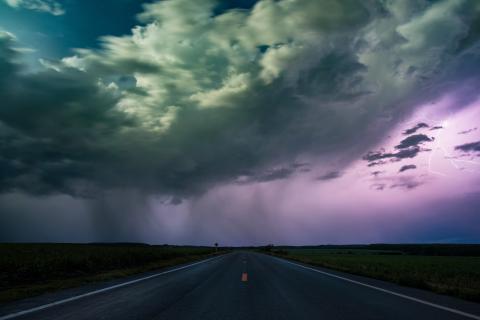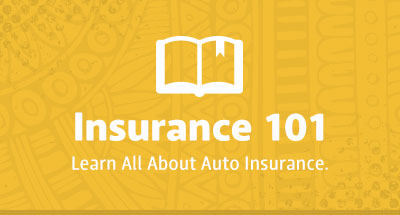10 Most Dangerous Roads in the US

Safely navigating the sprawling causeways of the U.S. motorway system can be tricky business, even for the most seasoned motorist in the most temperate of seasons. Preliminary 2016 data released in February by the National Safety Council (NSC) estimated that as many as 40,000 people died in motor vehicles collisions last year, a 6% rise from 2015 and an approximate 14% increase in deaths since 2014. If these numbers bear out, it means that 2016 represents the single deadliest year for automotive fatalities on U.S. roads since 2007. The steady decline of gas prices and increased motor-vehicle mileage combined with dangerous behaviors such as texting while driving and speeding have coalesced into a fatal combination for American motorists. There’s seldom been a time where we’ve been in more of a rush while simultaneously being perilously distracted. As part of our continued advocacy effort to advocate responsible driving habits and proactive safety precautions, we’ve compiled a list of the 10 most dangerous roads in the U.S. and their respective fatality counts so as to better inform our customers and readers within and outside of Illinois and keep them safe.
10. I-95 in South Carolina
“The I-95 in South Carolina has more than 24 fatal crashes a year. It runs roughly parallel to the state’s Atlantic coast.”
Constructed in 1968, South Carolina’s I-95 runs the length parallel to that of the Atlantic Ocean short, albeit 50 miles inland from it, spanning from the southern tip city of Hardeeville to the far northeast burg of Dillon. Running roughly parallel to the Atlantic coast, Geotab estimates that I-95 has had over 244 crashes and 301 fatalities over the past decade, averaging at 24 fatal crashes a year and a fatal crash rate of 1.3 percent. According to a review of five years of accident data on South Carolina’s five main interstates (95, 20, 26, 77, and 85) published in 2007, I-95 accounted for approx. 77 percent of fatalities among those interstates. I-95 is the main route heading up and down the East Coast, funnelling a large swath of moving traffic leading to Florida. The fatigue of drivers navigating this immense stretch of highway combined with other factors (ongoing construction, inattentive merging, inclement weather) is the likely cause of 95’s treacherous reputation.
09. US Route 101 in Oregon
“US Route 101 runs along Oregon’s Pacific Ocean coast. There are an average of 34 fatal crashes a year.”
Erected in 1926, U.S. Route 101 runs from the California border upward to the Washington state line on the Columbia River and south of the Oregon city of Brookings. Known for its reputation as one of the most scenic drives in America, with its prominent view of quiet seaside coves, popular beach towns, and quiet tourist spots, the 101’s otherwise lethality may be an inadvertent result of its popularity. According to Geotab, Route 101 has had approx. 125 crashes and 140 fatalities within the past decade, estimates to an average of 34 fatal crashes a year and a fatal crash rate of 1.3. Although partially attributable to the highway’s adjourning proximity to the coast, the likeliest cause for the rate of fatalities along the 101 is the congestion of tourists and sightseers combined with the road’s narrow passages and winding turns. Not that that is meant to dissuade visitors from driving the 101, though it does mean that any would-be traveller should be mindful of keeping a controllable speed and manageable distance between other drivers while navigating it.
08. I-80 in Wyoming
“The I-80 in Wyoming follows part of the route of the historic Oregon Trail. It sees over 17 fatal crashes a year.”
Running the length between San Francisco and Teaneck, New Jersey, the I-80 interstate runs concurrently with US Route 30 for the majority of their duration through Wyoming and spans from the Utah state line near Evanston to the Nebraska state line in Pine Bluffs. While one would assume that, considering Wyoming’s low population and wide territory, driving across the state would be relatively safe. Despite this seeming advantage, the cowboy state is home to one of the most dangerous roads in the United States. According to Geotag’s 2017, the I-80 in Wyoming is ranked as the top eight most dangerous highway in America, with an estimated 175 crashes and 207 fatalities in the past decade and a fatal crash rate of 1.4, averaging at approx. 17 fatal crashes a year.
07. US-2 in Montana
“US-2 is the northernmost east-west US Route. Its Montana stretch has an average of 13 fatal crashes a year.”
An east-west highway spanning 2,571 miles across the northern edge of the continental United States, U.S. Route 2 has more of its mileage within Montana than any other state in the country. With approx. 130 crashes and 152 fatalities over the past decade, the US-2 is a treacherous stretch of road with an average of 13 fatal crashes a year adding up to a fatal crash rate aggregate of 1.4%. A major contributing factor to Route 2 being one of the deadliest roads in the country is that it’s comprised almost entirely of long flat stretches of rural road, making it more likely for drivers to drive faster speeds resulting in crashes. Because of US-2 length, it means that it can take ambulances anywhere up to 80 minutes to respond to said accidents, resulting in higher mortality rates. These two facts combined mean that it’s crucial to be wary of your fellow drivers and avoid travelling this stretch of road, whenever possible.
06. US-18 in South Dakota
“The South Dakota portion of US-18 sees an average of around 5 crashes a year. Part of it is known as the Oyate Trail, named for the tribal lands it passes.”
Cutting an east-west swath across the Midwest, bookended by Orin, Wyoming and the western town of Milwaukee, Wisconsin, The US-18 runs concurrently with several other U.S. routes from its western terminus in Orin to Mule Creek Junction, Wyoming. According to Geotag, the South Dakota stretch of US-18 is the sixth deadliest roadway in the United States, with a total of 48 crashes and 55 fatalities within the past decade, averaging to an approx. total o 5 crashes per year and an overall crash rate of 1.4 percent. These estimates are likely owed to South Dakota’s liberal interstate speed limits, which in 2015 were raised to a maximum of 80 miles per hour. With Federal traffic safety crash tests are conducted within the range of 30 to 35 miles per hour, contemporary safety features among most vehicles are not built to withstand forces in an exaggerated excess of those speeds. Be cautious, alert, and whenever possible— avoid driving US-18 during busy seasons.
05. I-40 in New Mexico
“The I-40 in New Mexico sees more than 34 fatal accidents a year. It connects the state with Arizona and Texas.”
Running east-west through Albuquerque, the I-40 is one of New Mexico main interstate thoroughfares. Over the past decade, according to Geotab’s survey, the I-40 has been the unfortunate site of 344 crashes and 395 fatalities, totaling to an average of 34 fatal accidents a year and a fatal crash rate of 1.4 percent. According to Keller & Keller, a law office based out of the Indiana, Michigan, and New Mexico area, the accidents and deaths cited in Geotab’s study are likely attributable to the increasing traffic of vehicles moving through the interchange in recent years. Traffic volume has been and remains a frequent local concern in the New Mexico community since the interchange was first erected in the 1960’s, even after renovations were implemented in 2000 to accommodate for the increased flow of traffic. Over 300,000 vehicles use the I-40 every day, including commuter cars and truck and large commercial transport semis. The best option to avoid the perils of getting into an accident on the I-40 are plotting one’s course out in advance before travelling, creating alternative routes that run along the path of the 1-40 with as little interaction with it as possible, or taking public transit via bus or train to reach your destination.
04. I-40 in Arizona
“In Arizona, the I-40 replaced most of the route of the famous Route 66 - on average nearly 25 fatal crashes a year take place on the highway.”
Connecting California to New Mexico, the Interstate 40 is one of Arizona’s busiest highways; connecting several major cities such as Kingman, Flagstaff, and Holbrook and adjourning the local Hopi and Hualapai reservations. Spanning the width of the Grand Canyon state at approx. 359.11 miles, the I-40 has undergone multiple renovations over the past years as the volume of commuters and shipping routes that depend on it have grown exponentially. According to Geotab’s estimates, the I-40 has been the site of over 249 crashes and 293 fatalities over the past decade, averaging at a fatal crash rate of 1.6 percent. If you're travelling east-to-westbound through Arizona, there’s little likelihood you’ll be able to avoid travelling along the 40. The best advice is to hew on the side of caution: keep a one-to-two car distance from the vehicle in front of you, remain cognizant of the behavior of the drivers around you, and when it comes to the Interstate’s speed limit of 75 mph, choose to stay within the range of 60-65 in order to mitigate any potential accidents.
03. State Route 140 in California
“Sometimes called the Needles Freeway, the 140 in California has an average of 11 fatal crashes a year.”
Spanning the distance between the San Joaquin Valley and Sierra Nevada before ending in Yosemite National Park, State Route 140 is one of the Sunshine State’s most celebrated scenic routes. It is also, unfortunately, one of the country’s deadliest. According to Geotag, California’s 140 is ranked third among highways with the largest concentration of automobile collisions and fatalities in the country, totalling an estimated 116 crashes and 136 deaths over the past decade, balancing out to an overall average of 1.8 percent.
02. US-38 in Texas
“The US-83, also known as the Texas Vietnam Veterans Memorial Highway, has had an average of 26 fatal crashes a year over the last 10 years.”
Running North and South along the center of the state, US-83 is the second-most deadly road in the United States. The road’s fatal crash rate of 2.0 percent, with 268 crashes and 336 fatalities in the past ten years, could most likely be chalked up to its sheer enormity and the perils of long-haul distance driving. Texas is a large state, and terrain of that size and diversity can offer significant challenges aside from the relative capabilities of drivers around you.
01. US-1 in Florida
“The Florida section of the US-1 saw the most fatal crashes for any highway in any state in the last 10 years - over 1000.”
The north-south highway artery between Miami and the Keys is notorious for the number of fatal and near-fatal crashes and collisions that occur along its commute. Over the past decade, the number of crashes across US-1 (1011) eclipse that of its closest parallel Texas US-83 (268) by over 3.7 percent, while the number of automotive fatalities along US-1 (1079) outpace Texas US-83 (336) by 3.2 percent. Not only is the Sunshine State intersected with I-10 and I-95, both ranked last year as the first and second most deadliest highways by Auto Insurance Center in a study published last year. Though the bridge is marvellous and view is even more so, regular drivers must be extremely cautious when crossing, as visitors may be tempted to drive slow and take in the sights. If happen to be visiting the Florida Keys, stay alert and be considerate of your fellow drivers and surroundings. It could very well mean the difference between life and death.






